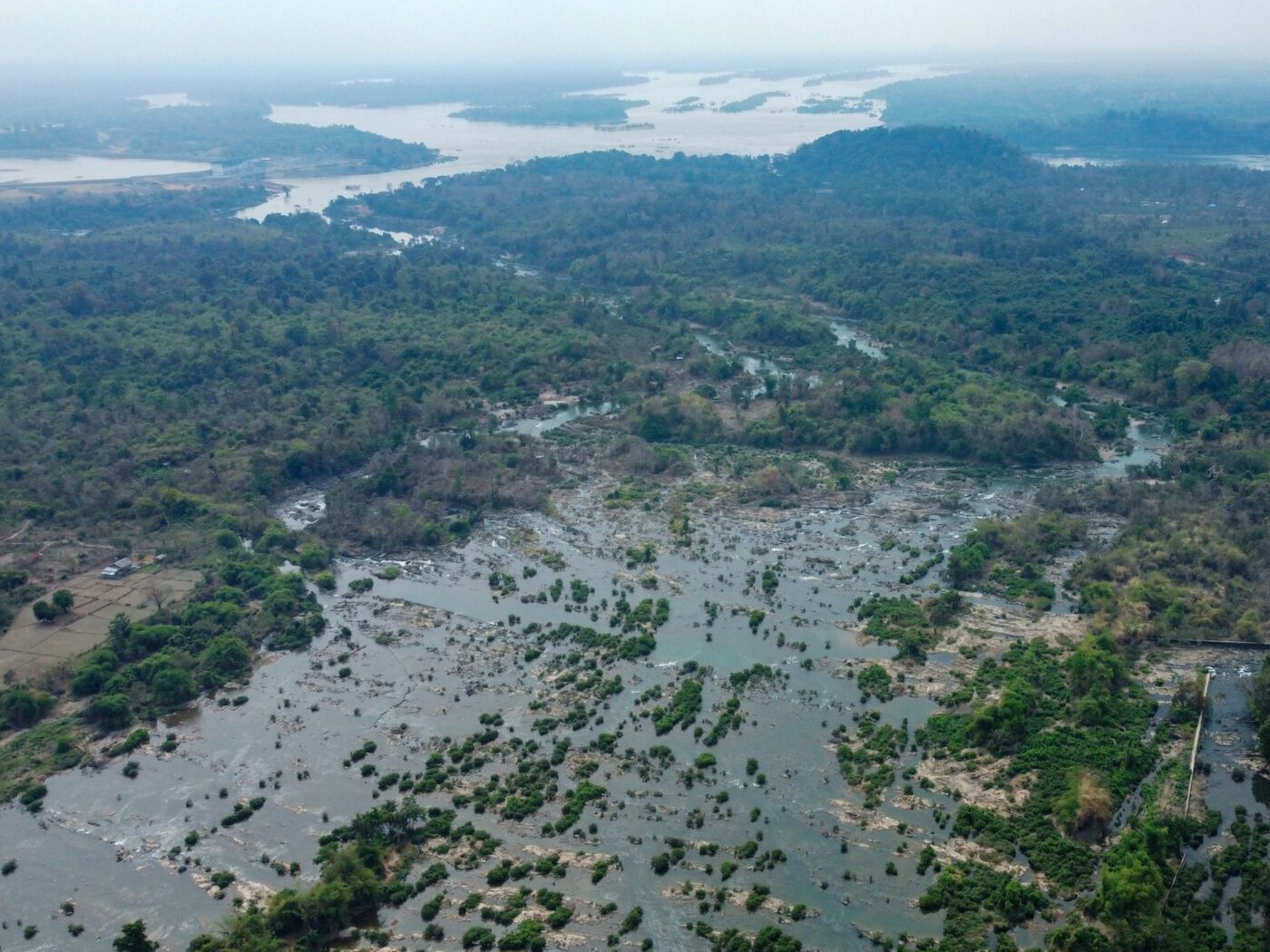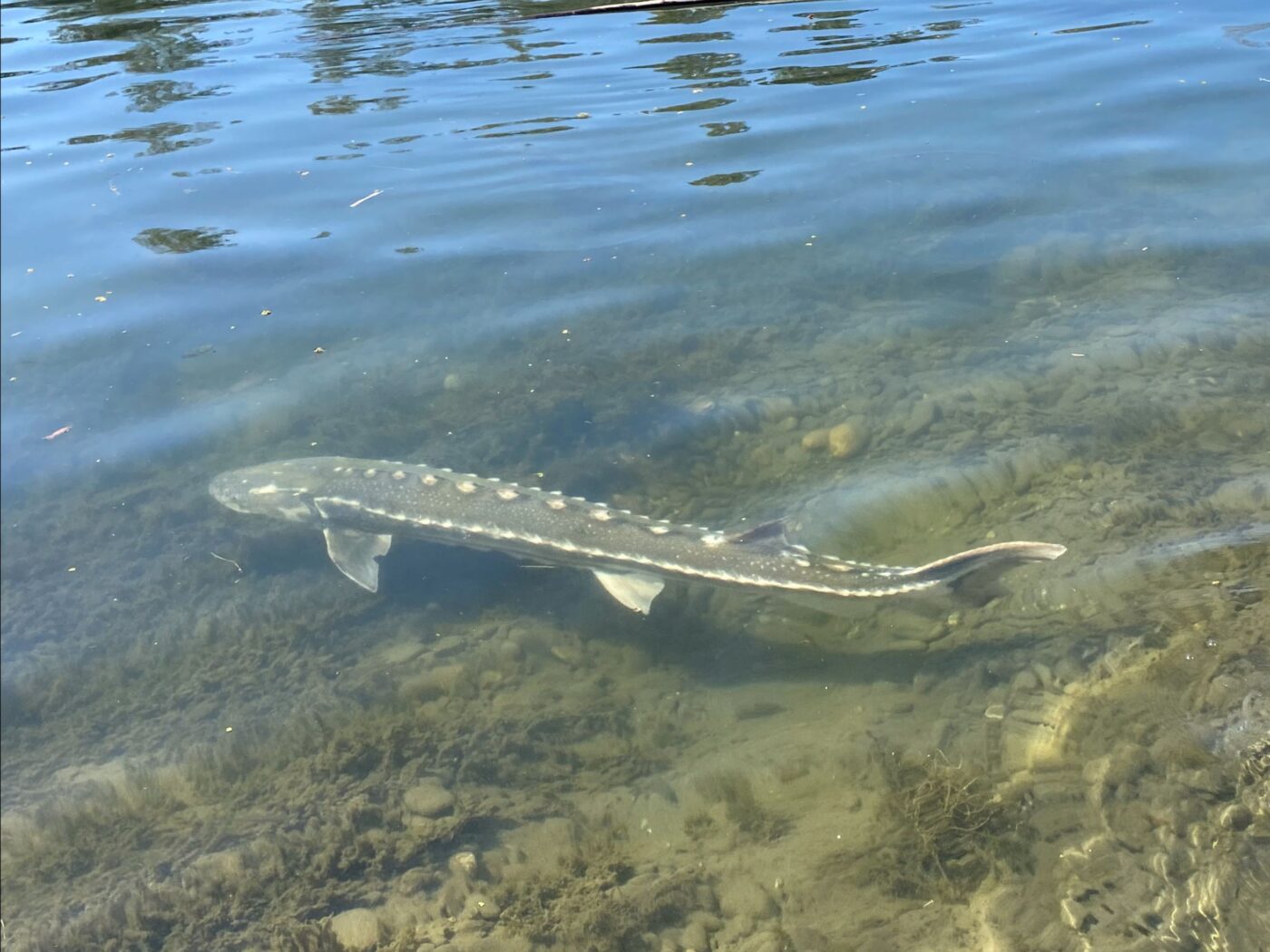Monday August 5, 2024

Migratory fish live a very taxing and often dangerous lifestyle, traveling hundreds, sometimes thousands, of miles through treacherous environments to complete their life cycle. Human induced environmental damage has made these already challenging journeys even more difficult. Migratory species that spend all or part of their lives in freshwater are especially vulnerable to habitat alteration, disproportionately more so than their non-migratory counterparts. According to the recently updated Living Planet Index (LPI) for Migratory Freshwater Fishes Report (Deinet et al. 2024), monitored populations of freshwater migratory fishes have decreased 81% from 1970 to 2020, equating to a yearly decline of 3.3%. Overexploitation, spread of invasive species and disease, pollution, climate change, and habitat change, loss, and degradation are just some of the major threats harming migratory fishes. The 2024 LPI report provides a detailed summary of population trends for migratory freshwater fish and highlights the importance of restoring and protecting free-flowing river habitat where possible.
The authors generated a list of fish species from the World Wildlife Fund’s Living Planet Index Database (LPD) based on movement patterns and only selected fish identified in the database as “full migrant,” “altitudinal migrant,” or “nomadic.” The resulting list of 1,255 freshwater migratory species was used to summarize key data points from the LPD and provide new analyses based on updated data. This list was narrowed to 284 native species from multiple countries that migrate in freshwater for some or all of their lives, and 1,864 populations within these species were isolated for further analysis. The report presents trends for different subsets of these species using the LPI method to calculate the rate of change in population sizes from year to year.

Children watch migrating Chinook salmon (Oncorhynchus tshawytscha) move upstream through the fish ladder at Bonneville Dam on the Columbia River in Oregon.
The results revealed a global decline of approximately 81% from 1970 to 2020 for the 284 selected species, which aligns closely with the 83% decline for all freshwater vertebrates reported in the WWF 2022 LPI report. The LPI analysis is based on average population change, meaning that on average, these fish species have decreased 81%, but some populations may not have decreased as severely and others actually experienced increases. However, a significant majority (65%) of freshwater migratory fish populations have decreased, and based on closer analysis of these trends, they are declining at an alarming rate. The report broke the results down into four regions: North America, Europe, Latin America and the Caribbean, and Asia-Oceania. Africa was included in the trend analysis, but was not displayed in the results due to limited data availability for fish populations on that continent. Declines in Europe and Latin America and the Caribbean are especially concerning, at 75% and 91%, respectively. The Latin America and Caribbean region in particular shows the steepest decline at 5% per year, on average. North America and Asia-Oceania are facing less severe, although still substantial declines of 35% and 28%, respectively.
Habitat degradation, change, and/or loss, typically from dam or barrier construction, are responsible for 50% of all reported threats to migratory freshwater fish populations. In Europe, for example, free-flowing rivers have become a rare occurrence due to an estimated 1.2 million in-stream barriers. Across the Atlantic, Latin America and the Caribbean is home to the world’s largest freshwater fish migration, but dams, mining, and water diversion have contributed to recent population declines. Although declines in North America have been less dramatic, many species likely faced declines before the study period (prior to 1970), when large-scale changes in river flows and habitat fragmentation were widespread and less regulated. The Asia-Oceania region also shows lower declines, but the ever-looming threat of the expansion of hydropower dams puts migratory fish species in this region at risk of future declines.

View above Konephasoi Falls in Khong district, Champasak Province, Laos. The river geography demonstrates the complex environments that migratory fish have to navigate, with Don Sahong Dam visible in the upper left corner.
The updated LPI for migratory freshwater fish reveals an unsettling downward trend in global fish species abundance and diversity. However, the authors provide several recommendations and considerations to facilitate a better understanding of these trends and ultimately develop sustainable solutions. Increased monitoring efforts across all regions can contribute to a more robust dataset, especially in underrepresented areas like Asia, Africa, and South America. Tackling major threats like habitat fragmentation due to dams and other barriers will be difficult, but is ultimately necessary to protect fish migration routes.

Releasing a tagged green sturgeon (Acipenser medirostris). This species migrates from marine to freshwater habitats along the West Coast of the US and Canada.
Dam removals in the US, such as the ongoing, historic Klamath River dam removal, serve as inspiration for future restoration efforts. In Europe, the EU has established a Biodiversity Strategy that aims to restore 25,000 km of rivers by 2030. Globally, the Freshwater Challenge, in collaboration with the UN Decade on Ecosystem Restoration effort, has committed to a goal of restoring 300,000 km of rivers and 350 million hectares of wetlands. Protecting migratory fish species will require significant public and political cooperation, but current and planned restoration efforts have demonstrated that future recovery of these unique and charismatic species is not out of reach.
Header Image Caption: FISHBIO staff releasing a tagged Jullien’s golden carp (Probarbus jullieni) as part of a study of fish migration in the Mekong River.
This post was featured in our weekly e-newsletter, the Fish Report. You can subscribe to the Fish Report here.
